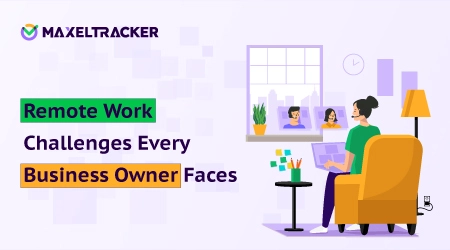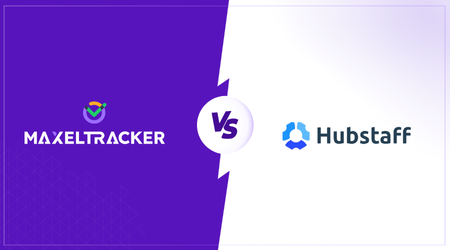

Employee disengagement is a major challenge for organizations worldwide, significantly affecting productivity, morale, and overall business success. According to Gallup, only 23% of employees globally are actively engaged at work, while 60% are not engaged and 15% are actively disengaged—meaning they are emotionally disconnected and may even undermine workplace efforts. Studies show that disengaged employees can cost companies up to 18% of their annual salary in lost productivity. Additionally, businesses with low engagement levels experience higher absenteeism, 23% lower profitability, and 18% lower productivity compared to highly engaged teams.
Disengagement doesn’t just impact individual performance—it creates a ripple effect, slowing down projects, increasing errors, and lowering team morale. When employees lack motivation, they are less likely to take initiative, meet deadlines, or contribute to workplace innovation. In contrast, engaged employees drive efficiency, collaboration, and company success. Understanding the causes and effects of disengagement is crucial for organizations aiming to maintain high performance and a positive work culture.
Employee disengagement occurs when workers feel emotionally disconnected from their roles. They lack motivation, enthusiasm, and a sense of belonging within the company. Disengaged employees do the bare minimum, meeting expectations without putting in extra effort. Their morale is often low, which can result in decreased productivity, higher turnover, and a negative workplace atmosphere.
Most organizations experience employee disengagement, whether they recognize it or not. Over 60% of employees worldwide are not engaged at work, and another 15% are actively disengaged—potentially harming customer relationships, team dynamics, and employer reputation.
Disengaged employees often show clear signs that they are no longer invested in their work. They collaborate less with colleagues, avoid problem-solving, and exhibit a general sense of apathy. Common indicators include:
Declining Productivity: A noticeable drop in output, frequent missed deadlines, and reduced attention to detail.
Frequent Absences: Arriving late, leaving early, or calling in sick without notice, often without considering the impact on their team.
High Turnover: An increase in employees leaving, especially in clusters, often signals widespread disengagement.
Lack of Participation: Minimal contribution in meetings, reluctance to take on new projects, and overall withdrawal from team interactions.
Stalled Growth: Little to no interest in learning new skills or advancing within the company—doing just enough to get by until a better opportunity arises.
While some disengagement stems from personal challenges, many workplace factors play a significant role. Common causes include:
Poor Communication: Ineffective communication leads to confusion, frustration, and a lack of direction.
Lack of Recognition: Employees who feel unappreciated are less likely to stay engaged or motivated.
Job Dissatisfaction: Monotonous or unchallenging work can quickly drain enthusiasm and commitment.
Unclear Role Alignment: When employees don’t see how their work contributes to company success, engagement declines.
Limited Growth Opportunities: Without clear career progression, employees lose interest and seek opportunities elsewhere.
Addressing these issues early is key. Disengagement stifles innovation, while high engagement drives productivity. Whether through recognition programs, career development, or better workload management, creating a positive work environment should be a priority. The longer you wait, the harder it becomes to reverse the effects.
Employee disengagement has a direct and widespread effect on productivity. When employees lack motivation, their work suffers, leading to missed deadlines, more errors, and lower-quality output. This slows down projects, disrupts collaboration, and weakens overall team performance. Even worse, disengagement can spread, negatively impacting the morale and productivity of others.
Disengaged employees often do the bare minimum, completing tasks at a slower pace and without attention to detail. Missed deadlines create workflow bottlenecks, while a lack of accountability results in more mistakes, lowering work quality and customer satisfaction.
Lower engagement is closely tied to higher absenteeism. Disengaged employees are more likely to call in sick or take excessive time off, disrupting team workflows and increasing the workload on others. This added strain can lead to burnout among engaged employees, causing a ripple effect of declining motivation. High disengagement also drives turnover, which is costly in terms of recruitment, onboarding, and lost expertise.
Disengaged employees can create a toxic work environment, diminishing the motivation of even the most dedicated team members. Constant negativity, complaints, and lack of enthusiasm can discourage collaboration and innovation. When disengagement goes unchecked, it erodes workplace culture, making it harder for engaged employees to thrive.
The cost of disengagement goes beyond lost productivity—it affects retention, team morale, and overall business success. Addressing disengagement early is essential to maintaining a motivated and high-performing workforce.
Addressing employee disengagement requires a proactive and multi-faceted approach. Organizations can enhance engagement by fostering open communication, providing growth opportunities, and cultivating a culture of recognition and well-being. When employees feel valued, supported, and aligned with company goals, they are more motivated to contribute their best efforts. Prioritizing engagement not only improves productivity and innovation but also strengthens overall organizational success.
Leadership plays a crucial role in driving engagement. Managers who are transparent, approachable and provide clear guidance empower employees to take ownership of their roles. Encouraging open communication ensures that employees feel heard, valued, and comfortable sharing ideas or concerns. Additionally, leaders should actively provide feedback, mentorship, and development opportunities to help employees see their growth potential within the company.
Acknowledging employee contributions fosters motivation and a sense of purpose. Recognition should be meaningful and consistent, extending beyond standard performance reviews. Implementing peer-to-peer recognition programs, public acknowledgments, personalized incentives, and performance-based rewards can make employees feel appreciated and drive higher engagement. Small gestures like a simple thank-you note or celebrating milestones can significantly impact morale.
Employees who feel stagnant or lack career advancement opportunities are more likely to disengage. Providing training programs, mentorship opportunities, and tuition reimbursement encourages skill-building and career progression. Organizations should create clear career paths that outline the necessary skills and experience for promotions, giving employees tangible goals to work toward. Encouraging continuous learning through workshops, leadership training, and industry conferences also enhances engagement and job satisfaction.
Burnout is a significant contributor to disengagement. Companies should promote a healthy work-life balance by offering flexible work arrangements, mental health resources, and wellness programs. Encouraging regular breaks, manageable workloads, and a positive work environment can prevent stress and keep employees engaged. A culture that prioritizes employee well-being leads to higher job satisfaction and long-term commitment.
A strong sense of community in the workplace fosters higher engagement. Encouraging team collaboration through cross-functional projects, brainstorming sessions, and social events helps build stronger connections among employees. When employees feel a sense of belonging and teamwork, they are more likely to be invested in the company's success.
Giving employees more control over their work increases their sense of responsibility and engagement. When employees understand how their roles contribute to the company's larger mission, they feel a stronger sense of purpose. Encouraging autonomy, allowing employees to take ownership of projects, and involving them in decision-making processes can significantly boost motivation.
Learn how to enhance your team's engagement with MaxelTracker, a powerful employee productivity monitoring tool designed to provide valuable insights into employee behavior, identify disengagement early, and implement targeted strategies for improved motivation and performance.
MaxelTracker offers real-time visibility into employee activity, helping organizations detect patterns of disengagement. By analyzing app usage, time spent on tasks, and work habits, managers can identify employees who may be struggling and provide timely support.
With features like app categorization, system logs, and activity tracking, MaxelTracker helps employees stay on track by promoting accountability without micromanagement. Employees can review their own productivity patterns, empowering them to take charge of their work habits and improve efficiency.
MaxelTracker allows organizations to set up customized alerts for specific disengagement indicators, such as increased idle time or prolonged unproductive hours. HR teams can use these insights to offer additional training, workload adjustments, or well-being initiatives, ensuring employees feel supported.
By utilizing detailed reports and productivity metrics, businesses can develop effective engagement strategies tailored to their teams' needs. Identifying trends in performance enables organizations to implement meaningful changes that address the root causes of disengagement.
MaxelTracker integrates with Slack, Keka, and Trello, making it easier for teams to stay connected and collaborate effectively. By monitoring workload distribution and team performance, organizations can refine their communication strategies and foster a healthier, more engaging work environment.
MaxelTracker is more than just a monitoring tool—it’s a solution that helps businesses create a culture of accountability, support, and productivity, leading to a more engaged and motivated workforce.
Employee disengagement isn’t just a people issue—it’s a productivity roadblock that silently chips away at organizational performance. When employees lack motivation or connection to their work, it shows in missed deadlines, reduced output, and declining team morale.
With MaxelTracker, organizations can take a proactive stance. By offering insights into work patterns, identifying dips in focus, and highlighting areas where support is needed, MaxelTracker helps HR teams address disengagement before it turns into lost productivity. Instead of guessing, you get real data to guide smarter decisions and timely interventions.
Prioritizing engagement doesn’t require dramatic changes—it starts with visibility, clarity, and accountability. With the right tools in place, like MaxelTracker, you can refocus your workforce, support your teams, and build a more engaged and productive organization.
👉 Sign up now at MaxelTracker.com and start transforming your team’s productivity today! 🚀
👉 Explore our pricing plans and features to find the perfect solution for your team’s productivity needs! 🚀
Related Blogs

15 Remote Work Challenges Every Business Owner Faces — And How to Solve Them
Remote work rings a familiar bell, and it offers flexibility and global reach as well. But for CEOs, HR heads, and other important position holders across countries like USA, UK, Canada, or UAE, it is often the bringer of stress.

Insightful Alternatives & Competitors
Looking for an alternative to Insightful that offers a more tailored approach to workforce productivity and employee monitoring? We’ve got you covered.

Hubstaff Alternatives & Competitors
Your time tracking software serves as the control center for your team’s productivity. If it's lacking key features, like GPS tracking for mobile teams or other essential tools, it becomes difficult to manage performance effectively.